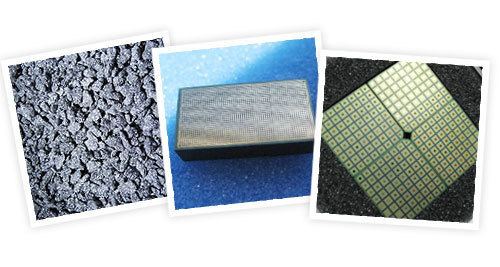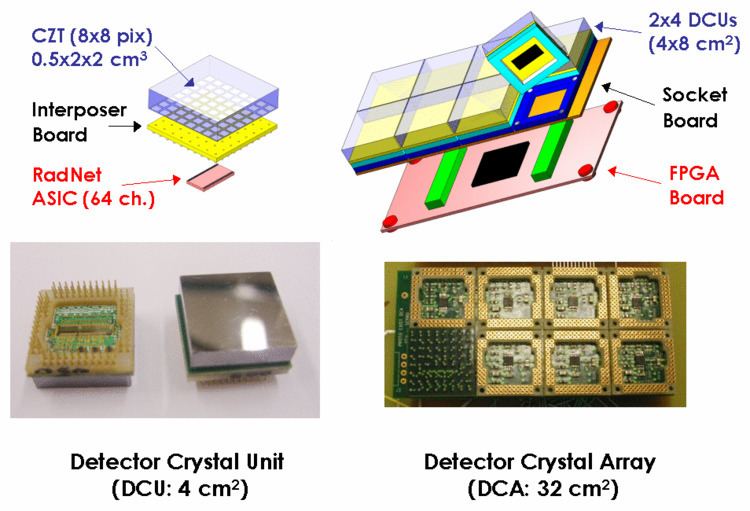 | ||
Cadmium zinc telluride, (CdZnTe) or CZT, is a compound of cadmium, zinc and tellurium or, more strictly speaking, an alloy of cadmium telluride and zinc telluride. A direct bandgap semiconductor, it is used in a variety of applications, including semiconductor radiation detectors, photorefractive gratings, electro-optic modulators, solar cells, and terahertz generation and detection. The band gap varies from approximately 1.4 to 2.2 eV, depending on composition.

Radiation detectors using CZT can operate in direct-conversion (or photoconductive) mode at room temperature, unlike some other materials (particularly germanium) which require liquid nitrogen cooling. Their relative advantages include high sensitivity for x-rays and gamma-rays, due to the high atomic numbers of Cd and Te, and better energy resolution than scintillator detectors. CZT can be formed into different shapes for different radiation-detecting applications, and a variety of electrode geometries, such as coplanar grids and small pixel detectors, have been developed to provide unipolar (electron-only) operation, thereby improving energy resolution.



